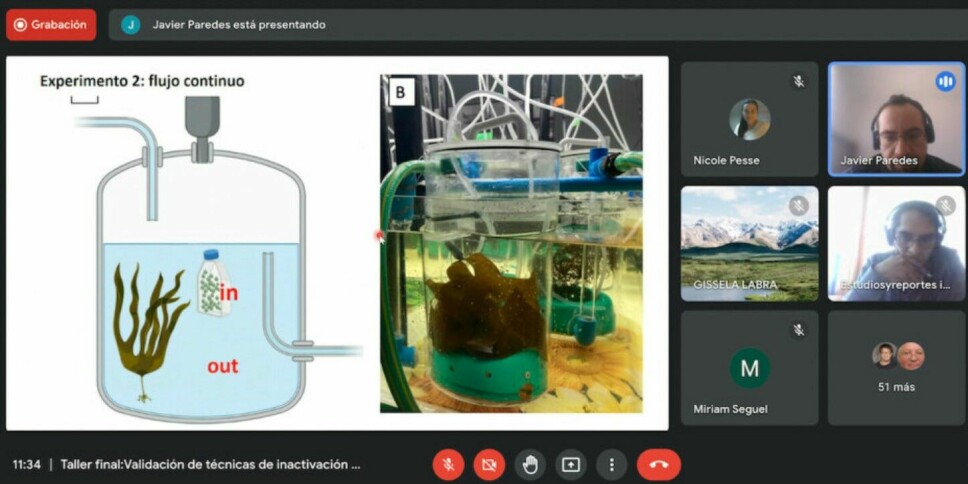
Seaweed may protect fish farms from algal blooms
Experiments in Chile show kelp can inhibit microalgae growth
Growing kelp and other seaweeds near salmon farms has been seen to negatively affect the growth of microalgae that can form harmful algal blooms (HABs), reports Fish Farming Expert's Chilean sister site, Salmonexpert.cl.
Results of experiments with macroalgae (large seaweeds) were outlined at a workshop held by Chile’s Fisheries Development Institute (Instituto de Fomento Pesquero, or IFOP) and the Centre for the Study of Harmful Algae (Crean).
Dr Javier Paredes, a Crean researcher, said there were several reasons why cultivating macroalgae might mitigate HAB events.
Macroalgae:
- absorb nutrients from the water column, so they are not available for the growth of possible harmful microalgae
- can produce allelopathic compounds, which can cause morphological damage in microalgae
- increase the pH balance of the water, reducing the growth of certain phytoplanktonic species
- enable the growth of bacterial biofilm that would also inhibit the growth of harmful microalgae
Experiments in the field and lab
Based on two experiments, one in the Comau Fjord (mesocosm) and the other in a laboratory with a continuous flow of water, results showed that macroalgae such as Macrocystis (kelp), Ulva and Agarophyton negatively affect the growth of microalgae such as Alexandrium catenella, Pseudochatonella verruculosa, and Karenia selliformis.
“Under co-cultivation and mesocosm conditions, it was observed that Macrocystis was capable of affecting the viability of the phytoplankton community,” explained Paredes in his conclusions, adding that the responses were species-specific.
In addition, he pointed out that the exudates or possible allelopathic compounds generated in the co-cultures did not have a negative effect on the viability of the fish gill cell lines, which is an indicator of the effects that integrated multitrophic aquaculture (IMTA) could have on farmed fish and non-target species.
Bubble bursts
The workshop also heard from Crean scientist Dr Jorge Mardones, who gave disappointing results of two studies on the protective effects of bubble curtains at two farms during HAB events – the blooming of Heterosigma akawashido in the Comau fjord in April 2021 and of Prorocentrum micans in the interior sea between the island of Chiloé and the mainland in 2021-2022.
On both occasions, the photosynthetic efficiency (Fv/Fm) and cell quantification (Cels/mL) of microalgae outside, inside and in the bubble curtain were measured, prior to turning on the bubble curtains (t0) and after one hour of operation (t1). Thiswas done at the surface and a depth of three metres within the water column.
“In both cases, our studies indicate that there are no differences between the abundance of microalgae inside and outside the bubble curtains,” said Mardones.
The researcher said that the vertical structure of the water column was not significantly altered during the activation of the curtains, and that during the bloom of H. akashiwo no cell rupture was observed, but rather an increase in photosynthetic efficiency with the activation of the mitigation system.
Study 'had limitations'
Faced with these results, Mardones indicated that the study had some limitations such as the climatic conditions at the farm sites, which can include strong sea currents or considerable wind, or the correct functioning of the curtains, which in certain cases generate larger bubbles due to plugging with fouling.
“This is a snapshot of a bloom and an activation period under a very particular type of oceanographic conditions, and therefore more studies must be generated under other conditions. Probably the results can improve if the conditions are more stable. I do not doubt that there are successful events,” he concluded.






















































